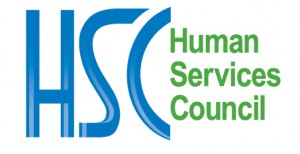

The relationship between HSC and UST will allow many more 501(c)(3) organizations to learn how to lower the cost of unemployment at their organization by opting out of the state unemployment insurance tax system and implementing best practices. By paying only the dollar-for-dollar cost of unemployment benefits awarded to former employees, organizations that join UST lower their average claims cost to just $2,287 per claim versus the national average of $5,174 per claim.
“Not only will this new partnership result in potential savings for HSC members,” explained Judy Zangwill, Executive Director of Sunnyside Community Services, who sits on the Board of Directors at HSC and is also a UST Trustee, “but there are also additional benefits in terms of gaining access to the ThinkHR hotline and training, and getting 100% representation at all unemployment claim hearings when an organization joins UST.”
“As a Trust member I knew that UST helps nonprofit organizations from the time an employee initially files for unemployment benefits to the end of the claims experience. But as a UST Trustee I have even greater insight into the program and can see that it’s not only efficient for members, it’s also a well-run organization that provides increased value for its 80 Affinity Partners.”
About the Human Services Council: HSC strengthens the not-for-profit human services sector’s ability to improve the lives of New Yorkers in need through networking, advocacy, research, media education and by acting collectively to establish greater balance between organizations and government. As a membership association HSC has long been at the forefront of enacting positive changes to outdated, bureaucratic governmental systems that human services providers must navigate to help those in need. In service to their members, HSC seeks to reduce regulatory burdens while strengthening accountability—with the overall goal of producing better outcomes for clients. Their efforts enhance public recognition of the sector, improve its financial stability, and have a long-term positive impact on the well-being of New Yorkers in need. For more information, visit humanservicescouncil.org.
About UST: Founded by nonprofits, for nonprofits, UST is the largest unemployment trust in the nation, providing nonprofit organizations with 10 or more employees a safe, cost-effective alternative to paying state unemployment taxes. UST has partnered with 80 state and national nonprofit-based associations to teach their members about their unemployment insurance alternatives. Visit www.ChooseUST.org to learn more.

“Wait, wait,” you might shout. “My organization gives employees all of those things.” And chances are, you’re right. But sometimes employees find that the day-to-day business of operating a nonprofit gets in the way of feeling that they are a part of something.
Worse, a disconnect between daily tasks and feeling a sense of purpose can lead to frustration in your employees. Hurst cites one high-level executive who made the switch from the nonprofit sector to the corporate world because she didn’t feel her work was impacting the mission of her organization.
But what is your organization supposed to do? How do you re-engage employees that feel their contribution doesn’t affect the overall mission of your organization?
Hurst explains that his 3 mantras are:
We’ve added a few additional suggestions though.

Every day is Earth Day for nonprofit members of the Unemployment Services Trust (UST) who are reducing their paper trail. More than 91% of the organizations that participate in the UST program now handle the details and filing of their unemployment claims online. 68% of UST members are participating in the online unemployment claim dashboard that allows them to view claims detail related to their organization and process information requests from the state. And an additional 23% of UST members have elected secure email channels as their method of claims response, further eliminating paper waste and increasing the speed of communication.
“This green initiative is our small way of contributing toward reducing our carbon footprint, and also making life easier for our nonprofit members,” says Adam Thorn, UST’s Director of Operations.
Thorn explains, “Last year the federal government mandated that state penalties should be imposed if an employer does not respond in a timely manner to the state’s request for information on an unemployment claim. The response window is often a week or less, so being able to e-file claims information helps mitigate the risk of non-compliance and helps us be a more eco-friendly program. It’s a win-win.”
About UST: Founded by nonprofits, for nonprofits, UST is the largest unemployment trust in the nation, providing nonprofit organizations with 10 or more employees a safe, cost-effective alternative to paying state unemployment taxes. UST has partnered with 80 state and national nonprofit-based associations to teach their members about their unemployment insurance alternatives. Visit www.ChooseUST.org to learn more.

Last year the Unemployment Services Trust (UST) identified $3,532,485.26 in unemployment tax savings opportunities for more than 200 nonprofits that requested a Savings Evaluation. Additionally, UST found $1.7 million in state errors that were credited back to current participants in the UST program after state charges were carefully audited by the claims administrator.
Based on research conducted by the UST Division of Nonprofit Research last year, 1 in 4 nonprofits is unaware of the legislation that allows 501(c)(3)s to opt out of paying state unemployment taxes and instead directly reimburse the state for the dollar-for-dollar cost of benefits paid to their former employees. UST helps nonprofits determine if this alternative will save them money by analyzing their past few years of unemployment claims. Savings can be as much as 60 percent.
“This year our goal is to find more than $7 million in potential savings for nonprofits that ask us to compare UST to their state unemployment tax rate or current supported reimbursing program. Too many organizations are overpaying for their unemployment costs, and we hope to help change that by putting more unrestricted funding back into their budgets when they take advantage of the UST Program.”
For most organizations that join UST, the savings add up quickly. Steve Lepinski, Executive Director of the Washburn Center for Children in Minneapolis and a long-time UST Trustee, said, “The savings generated by UST are like a large foundation has provided millions of dollars to nonprofits across the country.”
His organization estimates that it has saved more than $100,000 on unemployment costs since joining the UST program.
About UST: Founded by nonprofits, for nonprofits, UST is the largest unemployment trust in the nation, providing nonprofit organizations with 10 or more employees a safe, cost-effective alternative to paying state unemployment taxes. UST has partnered with 80 state and national nonprofit-based associations to teach their members about their unemployment insurance alternatives.

Hobbled by limited budgets for recruitment, historically lower pay scales, and fewer opportunities for internal advancement (the largest majority of mid-level employees come from other nonprofit organizations), nonprofits have a lot working against them when it comes time to hire. So what is a nonprofit to do when they need to source appropriate applications and hire the best candidates to advance their mission?
Let’s start by ensuring job postings are in the right place and reaching the most relevant candidates.
Rather than relying solely on word-of-mouth advertising through the nonprofit community, or on your informal network of connections, become active in sourcing candidates from the very field you want to hire for. You never know which job seekers are looking for the opportunity to leave the corporate structure in favor of an organization whose mission they are passionate about.

The same survey found that a whopping 85% of nonprofits don’t have a formal annual recruitment budget. Of the 15% of organizations that do have a formal recruitment budget, the media budget allotment was only $8,500 a year.
Maybe that explains why so many organizations rely on informal recruitment networks. But with only $8,500 to spare at most, where do organizations turn when they need to fill a position they can’t locally source from their pre-established informal recruitment networks? Even more difficulty emerges when the position a nonprofit is looking to hire for is highly specialized or needs a very select set of background and educational or certification experiences to support it.
A quick Google search of the term “specialty job listing site” returns more than 2.4 million results. For organizations looking to hire someone with highly technical training, there is the job site “37signals.” For those looking to hire someone with an accounting or other financial background, there is the site “Financial Job Bank.” And for nonprofits looking to hire skill sets most often found within the nonprofit sector, there are ASAE: CareerHQ and Opportunity Knocks.*
Other well-recognized specialized job boards include:
Another good way to look for potential applicants with specialized skills or certifications is by sourcing from your volunteer bank. (Hey, sometimes it’s best to rely on word of mouth!) If you are looking for someone knowledgeable in an area that you already have one or more volunteers in, consider asking them directly if they would be interested in submitting an application.
Similarly, your organization shouldn’t only be positing these specialized positions on specialized job boards. Consider posting on some of these sites as well. Even if you don’t directly reach the perfect candidate through general boards such as Craigslist or Indeed, many active job seekers know passive jobs seekers who they are willing to forward relevant positions to.
*Opportunity Knocks is a national online job board, HR resource, and career development destination managed by the Georgia Center for Nonprofits, one of UST’s 80+ Affinity Partners.

This is where the importance of having a well-written and well-defined job description (and by extension, job posting) comes in handy.* Including required experience, education, and other basic skill requirements allows potential candidates to self-screen before putting together a cover letter and resume package for your organization. In fact, even the simple act of requiring a cover letter (and throwing out all resumes submitted without one) can help your organization pre-screen employees based on their communication skills.
The same with including a salary range—a lot of companies don’t do this for a multitude of reasons, but applicants know what they need their base rate of pay to be. You don’t want to find the perfect candidate to only learn that you can’t afford to hire them after going through the entire recruitment process, do you?
After you’ve put together the full job description and have ensured that it will help potential candidates and the hiring committee quickly screen for the least likely candidates, it’s time to post. But where do you post the job description?
The easiest place to start is general job search sites, a short list of which you’ll see below.
Other places you should consider posting the job would be with your local community centers, churches, community colleges and universities, and libraries.
Have more suggestions? Share on our social media channels!
The next segment of this series will discuss finding candidates with refined or specific qualifications. Since many nonprofits often rely heavily on informal networks for hiring & finding new talent, these are sometimes the most difficult jobs to fill.

But what if the best person doesn’t submit an application? How can you reach the right job seekers with the right job postings? Well, there’s a song about how the best place to start is at the very beginning, so it’s important that you make sure you are posting job descriptions on the most appropriate sites.
There are so many different job boards though!
It’s a mixed blessing that you’re right. Even as the economy has improved and the unemployment rate has fallen (with the exception of February 2014), the area of source identification has remained murky when it comes time to recruit new candidates. For some positions, industry specific job boards provide the most active access to the ‘right’ candidates on a national, or even international, scale. But for highly localized job postings, where do you turn?
And where should your organization seek general skill jobs such as Admin Assistants or Receptionists?
Our newest series focuses on finding the best ways to identify candidate pools that are a good fit for your general positions, and finding candidates with more refined, specific qualifications.

UST maintains a secure site. This means that information we obtain from you in the process of enrolling is protected and cannot be viewed by others. Information about your agency is provided to our various service providers once you enroll in UST for the purpose of providing you with the best possible service. Your information will never be sold or rented to other entities that are not affiliated with UST. Agencies that are actively enrolled in UST are listed for review by other agencies, UST’s sponsors and potential participants, but no information specific to your agency can be reviewed by anyone not affiliated with UST and not otherwise engaged in providing services to you except as required by law or valid legal process.
Your use of this site and the provision of basic information constitute your consent for UST to use the information supplied.
UST may collect generic information about overall website traffic, and use other analytical information and tools to help us improve our website and provide the best possible information and service. As you browse UST’s website, cookies may also be placed on your computer so that we can better understand what information our visitors are most interested in, and to help direct you to other relevant information. These cookies do not collect personal information such as your name, email, postal address or phone number. To opt out of some of these cookies, click here. If you are a Twitter user, and prefer not to have Twitter ad content tailored to you, learn more here.
Further, our website may contain links to other sites. Anytime you connect to another website, their respective privacy policy will apply and UST is not responsible for the privacy practices of others.
This Privacy Policy and the Terms of Use for our site is subject to change.
UST maintains a secure site. This means that information we obtain from you in the process of enrolling is protected and cannot be viewed by others. Information about your agency is provided to our various service providers once you enroll in UST for the purpose of providing you with the best possible service. Your information will never be sold or rented to other entities that are not affiliated with UST. Agencies that are actively enrolled in UST are listed for review by other agencies, UST’s sponsors and potential participants, but no information specific to your agency can be reviewed by anyone not affiliated with UST and not otherwise engaged in providing services to you except as required by law or valid legal process.
Your use of this site and the provision of basic information constitute your consent for UST to use the information supplied.
UST may collect generic information about overall website traffic, and use other analytical information and tools to help us improve our website and provide the best possible information and service. As you browse UST’s website, cookies may also be placed on your computer so that we can better understand what information our visitors are most interested in, and to help direct you to other relevant information. These cookies do not collect personal information such as your name, email, postal address or phone number. To opt out of some of these cookies, click here. If you are a Twitter user, and prefer not to have Twitter ad content tailored to you, learn more here.
Further, our website may contain links to other sites. Anytime you connect to another website, their respective privacy policy will apply and UST is not responsible for the privacy practices of others.
This Privacy Policy and the Terms of Use for our site is subject to change.
An analysis by UWC- Strategic Services on Unemployment & Workers’ Compensation reveals that a number of states have state UI trust funds that are so insolvent they are unlikely to recover before the next recession. For employers in these states (listed below) it can be expected that state and/or FUTA tax rates will continue to rise with longer term restrictions being imposed on benefit increases alongside enhanced integrity efforts.
While some states have elected not to maintain a large trust fund balance and are relying on “just in time” supplemental funds to assure their solvency, many are using bonds to supplement UI taxes and remain strained.
States not meeting the 0.5 Average High Cost Multiple threshold as of December 31, 2013 include:
Alabama, Arkansas, Arizona, California, Connecticut, Delaware, Florida, Georgia, Illinois, Indiana, Kansas, Kentucky, Massachusetts, Missouri, North Carolina, New Jersey, Nevada, New York, Ohio, Pennsylvania, Rhode Island, South Carolina, Texas, Virgin Islands, Virginia, Wisconsin, West Virginia
States that do not meet the DOL recommended levels but have average High Cost Multiples of 0.5 or more include:
Colorado, DC, Hawaii, Maryland, Maine, Michigan, Minnesota, Puerto Rico, Vermont
States that have solvent UI trust fund balances according to the US DOL 1.0 Average High Cost Multiple formula include:
Alaska, Iowa, Idaho, Louisiana, Mississippi, Montana, North Dakota, Nebraska, New Hampshire, Oklahoma, Oregon, South Dakota, Utah, Washington, Wyoming